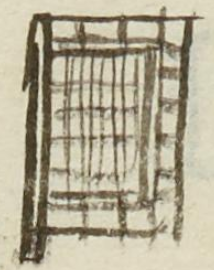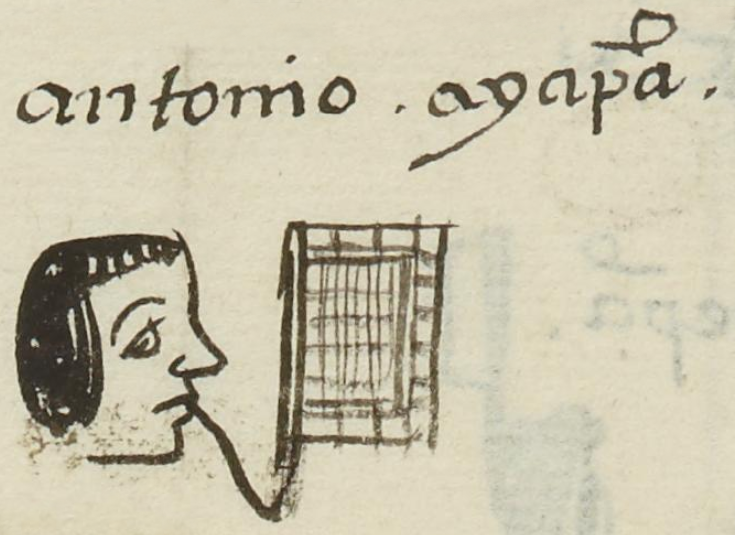Ayapan (MH679r)
This black-line drawing of the compound glyph for the personal name Ayapan (perhaps “Maguey Fiber Flag”) is attested here as a man’s name. The glyph shows a flag or banner (pamitl) made from a loosely woven, thin cotton blanket or cloak (ayatl). It is rectangular and attached to a stick. The flag flies toward the viewer’s right. The flag’s weave is very apparent, and it has a border of small squares. Another example of an ayatl appears below in the glyph Xiccayatl, which also shows an open weave.
Stephanie Wood
Ayapan was a fairly common place name, and several times it is used as a personal name. Four other glyphs for this personal name appear below. It could be a place of origin. A place named Ayapan exists in the state of Tabasco, Mexico (see: Daniel Suslak, “Ayapan Echoes,” American Anthropologist, Nov. 2011), and there may be others. If Ayapan is not literally about a flag, perhaps it refers to the medicinal plant, ayapana, so this could be the root of the name, and if so, the compound would be fully phonographic. This would be true, too, if the -pan is a locative, and the flag is another phonetic indicator.
Stephanie Wood
1560
Jeff Haskett-Wood
fabrics, telas, textiles, flags, banners, flores, nombres de hombres

aya(tl), a thin cloak or blanket of cotton, maguey, or henequen fiber, https://nahuatl.wired-humanities.org/content/ayatl
pam(itl), flag or banner, https://nahuatl.wired-humanities.org/content/pamitl
Bandera de Ayate
Stephanie Wood
Matrícula de Huexotzinco, folio 679r, World Digital Library, https://www.loc.gov/resource/gdcwdl.wdl_15282/?sp=438&st=image.
This manuscript is hosted by the Library of Congress and the World Digital Library; used here with the Creative Commons, “Attribution-NonCommercial-ShareAlike 3.0 License” (CC-BY-NC-SAq 3.0).






